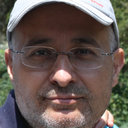Radiofrequency catheter ablation of left-sided accessory pathways via retrograde aortic approach in children.
Keywords
Abstract
BACKGROUND
We aimed to analyze the results of retrograde aortic radiofrequency catheter ablation of left-sided accessory pathways in children.
METHODS
Between January 2010 and September 2014, 25 children who underwent left-sided accessory pathway ablation with a retrograde aortic approach were evaluated retrospectively.
RESULTS
The mean age of the patients was 11.09±3.71 years. Seventeen patients were male (68%). The mean procedure and fluoroscopy times were 71.54±21.05 min and 31.42±19.57 min, respectively. Radiofrequency energy was delivered with 41.38±15.32 W at 52.38±5.45 °C. Sixteen patients (64%) presented with manifest preexcitation and, 9 had concealed accessory pathways. The location of accessory pathway was left lateral in 16 patients, posteroseptal in 5, left anterolateral in 2, and left posterolateral and left posterior in the remaining 2. The acute success rate was 96%. The patients were followed for a mean of 16.68±18.01 months. There were 2 recurrences. No major complications were observed in the periprocedural period. One patient had groin hematoma, another one had transient severe headache and vomiting. Trivial mitral regurgitation was noted in a patient, which remained the same throughout follow-up. None of the patients developed new aortic regurgitation, pericardial effusion, or thrombi at the site of ablation.
CONCLUSIONS
The retrograde aortic approach can be safely employed with a high success rate for ablation of left-sided accessory pathways in children.


